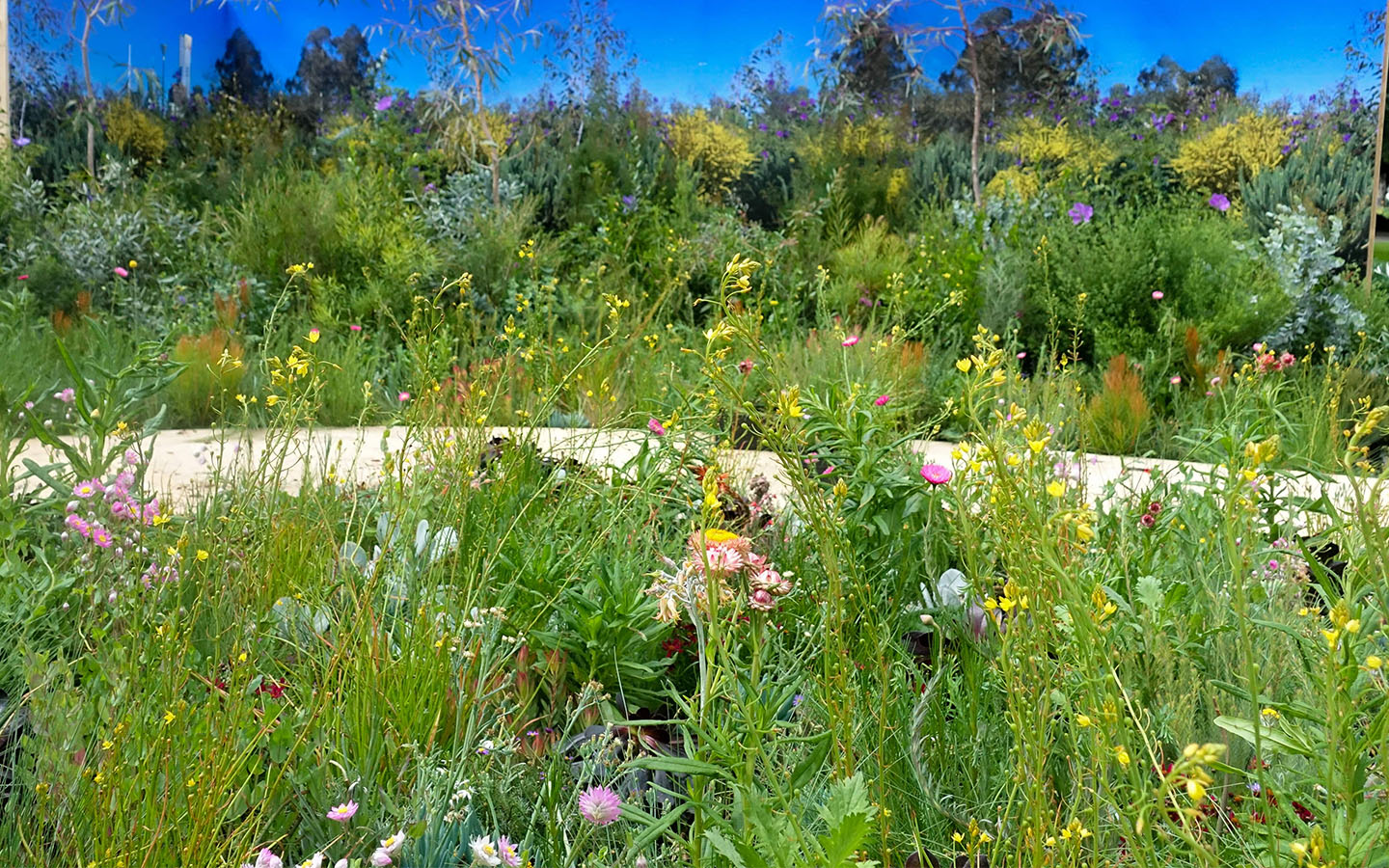Garden shows how attractive and sustainable plantings can improve city liveability

A diverse and interactive garden in the heart of Melbourne this autumn will represent how innovative horticulture research, landscape and floral design is improving the liveability of our cityscapes.
Covering 36 square metres, the innovative garden ‘woody meadows and flowery swards’ and will be on display at the Melbourne International Flower and Garden Show (MIFGS) in Carlton Gardens from 29 March to 2 April 2023.
By following a path through the garden, visitors can closely examine the plantings and enjoy the garden’s scents, colours, and forms from different vantage points.
The garden is a collaboration between landscape architects from Hassell, floral and garden designers from Super Bloom, and University of Melbourne horticulture researchers who are together rethinking urban plantings.
University of Melbourne Associate Professor Claire Farrell said the MIFGS display garden is an invitation to reimagine what is possible in public landscapes, demonstrating how climate-appropriate plantings can be aesthetically rich and highly varied in species and plant forms.
“We use natural shrublands as templates for woody meadows that are easily maintained: hard pruning or coppicing of the woody plants promotes flowering and dense growth that excludes weeds and saves money,” Associate Professor Farrell said.
The garden display at MIFGS illustrates findings from the Woody Meadow research project based at the University’s Burnley campus, which develops more attractive, affordable, and low-maintenance public plantings on our roadsides, railway sidings, verges, and parkland, to make Australian cities more liveable.
The Woody Meadow project is a partnership involving the Australian Research Council, the Victorian Government, eight city councils, the University of Sheffield, and several other organisations. The project is transforming cities nationally with over 6000 m2 of plantings across Perth, Sydney, Canberra and Melbourne.
The MIFGS garden display also includes a flowery sward, which University of Melbourne Associate Professor John Rayner said showcases how plants in cities can create climate-resilient spaces for wellbeing and beauty.
“For our MIFGS display, we have selected drought tolerant plants including annuals, perennials, succulents, and shrubs, and included an eclectic mix of Indigenous, native, and exotic species and cultivars,” Associate Professor Rayner said.
Director of Super Bloom Jac Semmler said the garden display demonstrates innovative planting design for future cities and highlighted the collaboration behind it.
“Teams make planting dreams,” Ms Semmler said.
Jon Hazelwood, Principal at Hassell said: “As designers of city spaces and streets, our new approaches show how resilient plantings can also be diverse and beautiful, which will hopefully inspire home gardeners too.”
Meanwhile, postgraduate horticulture student Emma Sheppard-Simms has won the inaugural Open Gardens Victoria Student Garden Design Competition, taking home a $10,000 grant to build a vibrant display at MIFGS. Ms Sheppard-Simms will lead an all-female trade team to install her winning garden design, believed to be a first in MIFGS’ history.